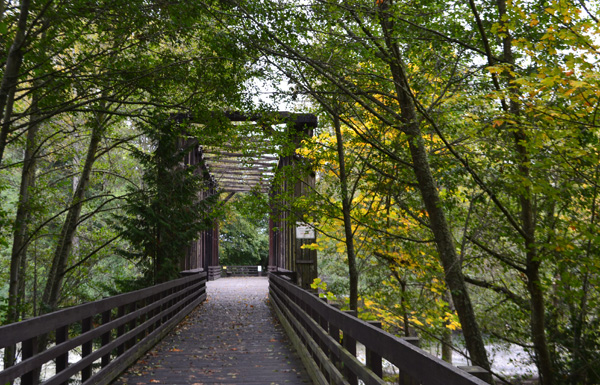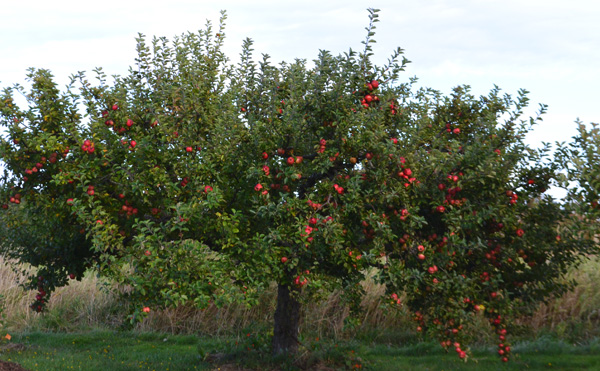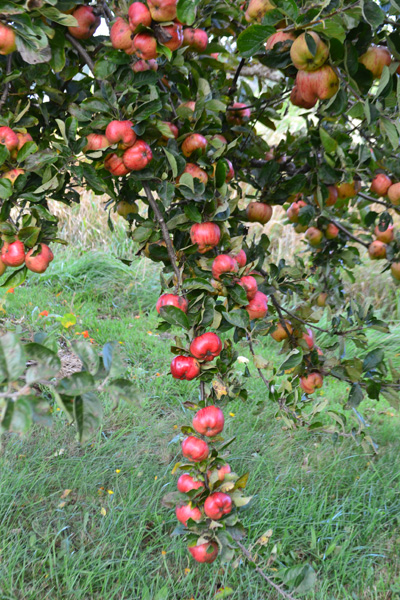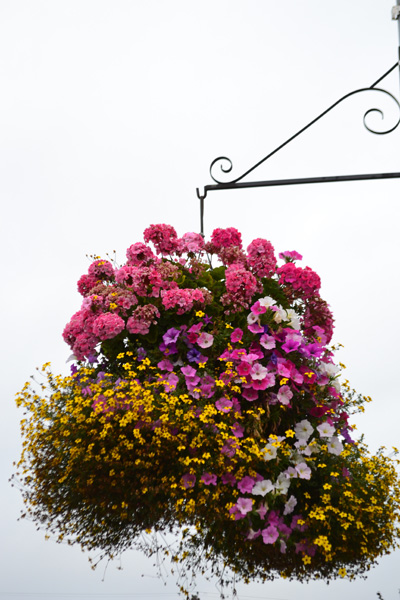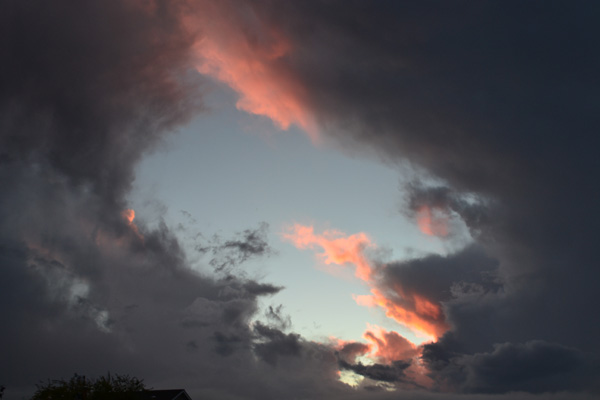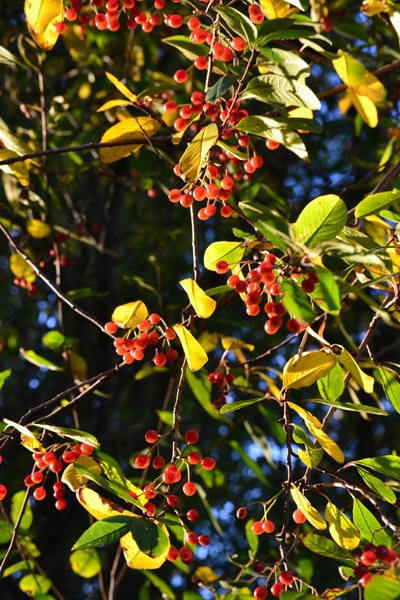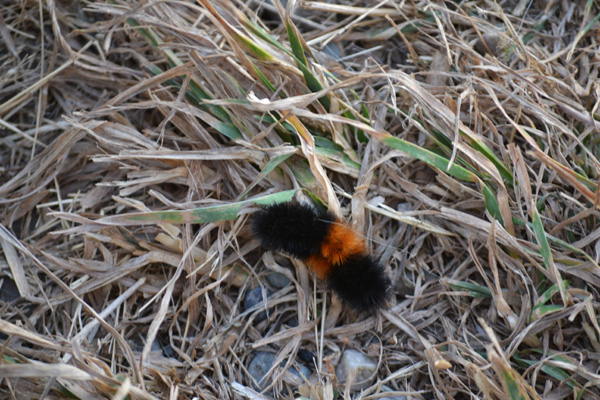
As the days get shorter and cooler I find myself pulling out more of those warm layers of clothes. It gets me feeling a little like a woolly bear, the little guy shown above. Which got me wondering this: what is a woolly bear, anyhow? And that led me to a particularly fun bit of research.
I hadn’t previously known that woolly bears, in some circles, are reputed to be predictors of winter weather. The caterpillar has 13 segments, dark on either end and orange/brown in the middle. More orange/brown segments in the middle, creating a wider band, are reputed to predict a colder winter.
Beginning in 1948, the insect curator of the American Museum of Natural History in New York City, Dr. C.H. Curran, began an eight year study in Bear Mountain State Park, 40 miles north of the City. He counted the dark segments of as many woolly bears as he could find in a day. He saw the limits of his research sampling but ultimately used it as an excuse for autumn leaf-peeping and a good time for himself, his wife, and a group of friends aptly named “The Original Society of the Friends of the Woolly Bear.” Their efforts ultimately succeeded in making the woolly bear caterpillar the most widely recognized caterpillar in North America. (Thank you, Dr. Curran!)
The woolly bears caterpillars we see moving around in the fall are looking for spots under bark or inside cavities in logs or rocks to overwinter.
So, what is the woolly bear? It is the larval form of Pyrrharctia isabela, the Isabella tiger moth. This is a yellowish-orange/cream-colored medium sized moth with black dots on its wings. Not nearly as cute and probably not as recognizable as its larval woolly bear form.

